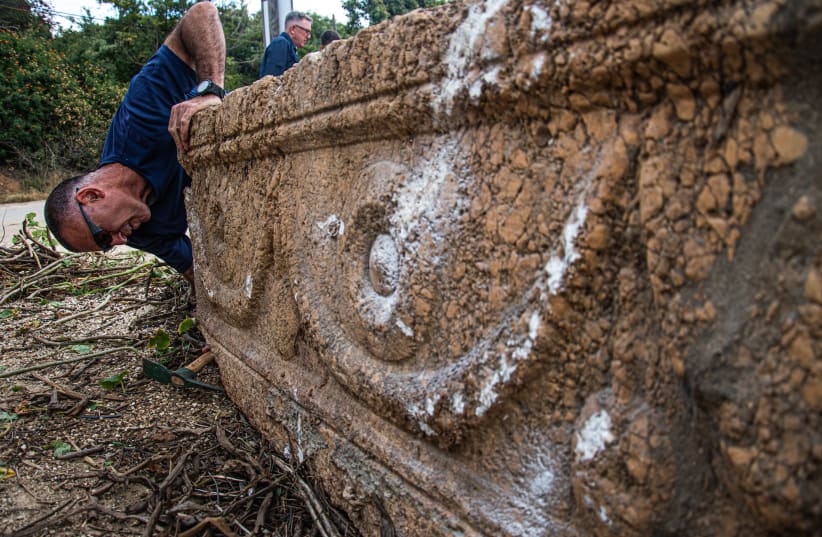Two stone sarcophagi dating back to the second or third century CE were uncovered at the Ramat Gan Safari Park during construction works to expand its wildlife hospital, the Israel Antiquities Authority announced on Thursday.
“We arrived at the Ramat Gan Safari Park as a result of vicissitudes that began some 25 years ago, when the park decided to build a parking lot,” Uzi Rothstein from the IAA Theft Prevention Unit commented. “The contractor cleared two stone structures and transported them to a farther area without having any idea of what he was dealing with.”
The sarcophagi were left untouched for years, covered in vegetation and dirt, until work on the new complex began, and the new contractor realized that those stones might actually be much more significant than previously thought. He alerted the safari park staff, who then got in touch with Rothstein and his colleague, Alon Klein.
The artifacts were made when the Romans ruled over the land of Israel. According to the archaeologists, the decorations featured on them were very common in Pagan burials: symbolic discs – to protect and accompany the soul on its journey to the afterlife – and floral garlands.
Because of the similarity between the sarcophagi, the experts said they may have belonged to husband and wife couple. Moreover, whoever was buried in them must have been wealthy.
While the provenance of the artifacts is unknown, the safari park is located near the area where the ancient city of Bnei Brak once stood. The city is mentioned in the Passover Haggadah as the setting of perhaps the most famous seder in Jewish history.
“It happened once [on Pesach] that Rabbi Eliezer, Rabbi Yehoshua, Rabbi Elazar ben Azariah, Rabbi Akiva and Rabbi Tarfon were reclining in Bnei Brak and were telling the story of the exodus from Egypt that whole night,” reads the text (translation Sefaria.org).
The story is believed to have taken place in the first half of the second century CE, at the eve of the Third Jewish Revolt against the Romans led by Simon Bar Kokhba. Rabbi Akiva, who was considered the spiritual leader of the rebellion, was tortured to death by the Romans.
“It could be that the sarcophagi are connected to the ancient city, it could be that they are not,” Rothstein concluded. “It is very rare to find sarcophagi in general and especially in their original site.”
The artifacts will be transferred to the Israeli National Treasures repositories next week.
